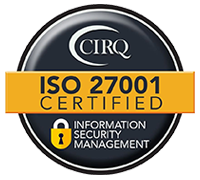Why Human Context Still Beats Machine Data
Data can be accurate and still be wrong for a decision.
That tension is growing as organizations collect more information than they can meaningfully interpret.
Machine-driven insights now process millions of data points instantly, surfacing patterns and reports without human involvement, but the increase in data hasn’t made decisions easier – it has simply raised expectations for what the data should clarify.
The difference? Context. Although AI can identify what people said or did, only humans can understand what the situation meant. Meaning, not volume, is what shapes the right decision. That said, AI has earned its role in the research process by handling the work that doesn’t require interpretation.
Where AI Accelerates Consumer Research Techniques
Video review that once required watching every minute of footage now gets summarized automatically, with key moments flagged for human analysis.
Open-ended responses that took days to code get tagged by theme and sentiment in minutes. Real-time quality monitoring catches bots, speeders, and inconsistent patterns during fieldwork, allowing teams to intervene immediately rather than learning about problems after the fact.
This is where AI excels: processing volume and surfacing patterns with speed and consistency that manual methods cannot match. Once those patterns emerge, the real work begins. Understanding what they actually mean requires human context.
Context Is Not a Vibe, It’s a Variable
The same words can mean entirely different things depending on who says them and when.
“It’s fine” can signal satisfaction, resignation, politeness, or rushed indifference. Pattern recognition flags the phrase. Context tells you which meaning applies.
Contradictions are insight, not error. People might buy one thing but feel another about it. They purchase the healthier option while craving the indulgent one. AI smooths away these tensions because they look like inconsistencies. Humans explore them because they reveal the competing motivations people actually navigate.
Motivation shifts by situation. The reason someone picks a product at 9 AM differs from why they pick it at 9 PM. Household dynamics, stress, time, and social context all influence decisions. These are fluid variables that only emerge through conversation.
The missing data matters most. Embarrassment, fear of judgment, guilt about waste, or pride in a choice they know others would question all shape behavior. These drivers stay hidden unless someone asks the right follow-up question at the right moment.
These layers of meaning are why context isn’t just descriptive. It actively protects decisions from misinterpretation.
Human Context Is Decision-Risk Insurance
Patterns without context can result in confident, wrong decisions.
An AI tool might flag that 60% of participants described a product as “convenient.” That sounds positive until a human moderator probes further and learns that “convenient” was code for “I feel lazy using this.” The pattern was accurate. The interpretation was backwards.
Human-led qualitative research adds decision guardrails by probing edge cases, exceptions, and social drivers that automated analysis misses. Consumer research techniques like in-depth interviews and contextual observation catch moments when what people say diverges from what they do.
In high-stakes categories, this matters even more. Health decisions, financial products, parenting choices, and identity-adjacent purchases all carry emotional weight that determines adoption and trust. Humans surface the hesitations, fears, and unspoken concerns that algorithms cannot detect because participants rarely articulate them unprompted.
Recent testing has shown that synthetic respondents can handle surface-level tasks but struggle when emotional or irrational motivations become central. That gap is exactly where qualitative research delivers the most value.
These limitations point directly to the areas where human judgment creates value, which is where qualitative expertise becomes irreplaceable.
Where Humans Win
Certain aspects of research require human judgment that AI cannot replicate.
Probing changes the answer. Humans hear hesitation, notice avoidance, and ask the follow-up question that gets to the real driver. A participant says they switched brands for “better quality.” A skilled moderator asks what that means personally and learns it was actually about feeling respected after a bad service experience.
Emotion with a cause matters. People rarely explain their emotional drivers cleanly. Skilled moderation helps them articulate what is difficult to say. The frustration is not just about the product but about what it represents in their routine, identity, or household dynamics.
Behavior in context tells richer stories. Ethnographic methods show what people do when nobody is asking them to report it. A shop-along captures what gets picked up, put back, and justified in real time. A mobile diary entry recorded during the decision provides better data than memory-based reconstruction.
Social dynamics drive outcomes. Household roles, identity signals, and perceptions of “who this product is for” often determine choices more than features or price.
Tradeoffs reveal the real decision. Humans map the full decision stack: price, guilt, time, health, convenience, social approval. AI treats choices as single-variable preferences. Humans understand that every decision involves negotiation between competing priorities.
These strengths show up most clearly in the qualitative methods designed to capture context.
Consumer Research Techniques That Require Human Context
These methods depend on human interpretation from start to finish.
Contextual interviews, whether in-home, in-store, or remote, allow researchers to see the environment where decisions happen. A “show me your setup” conversation often provides more insight than any survey.
Mobile diaries capture decisions in the moment rather than relying on memory. Entries recorded during the experience avoid the rationalization that happens when participants reconstruct events later.
Shop-alongs observe behavior as it unfolds. Watching what someone picks up, puts back, compares, and justifies reveals priorities that people cannot always articulate directly.
Projective tasks help participants express what is difficult to say plainly. Personification exercises, “talk to your past self” prompts, or “what would you advise a friend” scenarios create distance that makes honesty easier.
Artifact reviews add depth. Receipts, pantry photos, screenshots, and personal notes provide tangible evidence of behavior. AI can process these artifacts quickly through object detection. Humans interpret what they mean in context.
L&E Research tested this with a workflow involving nearly 200 photos. Object detection reduced review time and flagged technical errors. Human analysts then interpreted the patterns and connected them to participant motivations. The combination worked because each tool handled what it does best.
When to Lean on AI vs. When Humans Must Lead
The decision comes down to what the research needs to accomplish.
AI works well for processing volume, flagging patterns, monitoring quality, and accelerating repetitive tasks. It handles structured data efficiently and can surface directional trends quickly.
However, humans become essential when research involves emotion, high-stakes decisions, identity, contradictions, or tradeoffs. Consumer research techniques that explore motivation, probe behavior gaps, or interpret social dynamics require human judgment. Pattern detection finds what people said, but human context explains why it matters.
The strongest research combines both tools strategically. AI accelerates the processing while humans provide the interpretation, and that balance protects quality while improving efficiency.
The Future Is Human-Led, AI-Supported, and Quality-Protected
Context is what separates insight from noise.
While AI tools will continue to improve, efficiency will mean nothing if the interpretation is wrong. Human expertise leads the work when meaning, motivation, and context shape decisions.
If you’re evaluating where human context matters most in your research, L&E Research can help you design studies that balance efficiency with insight. Contact us today to learn more about what our team can do for your business.
















